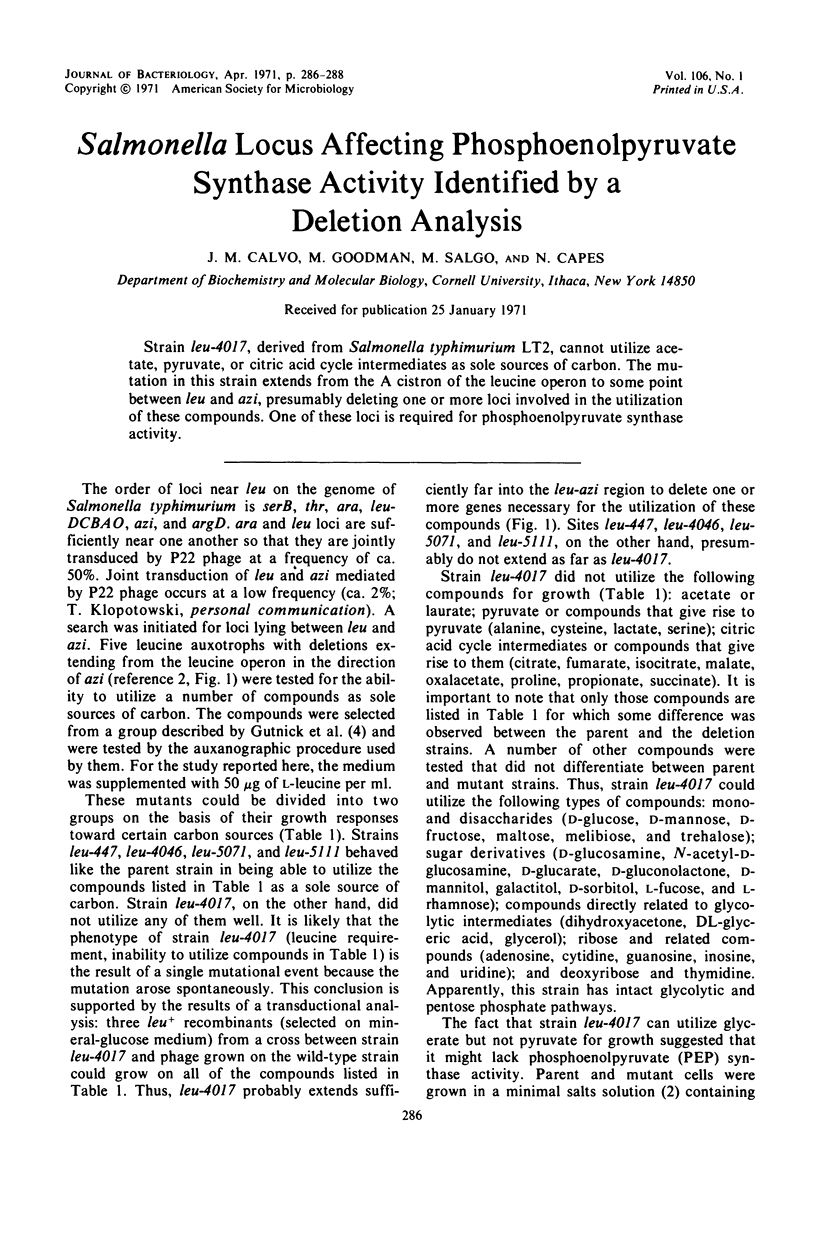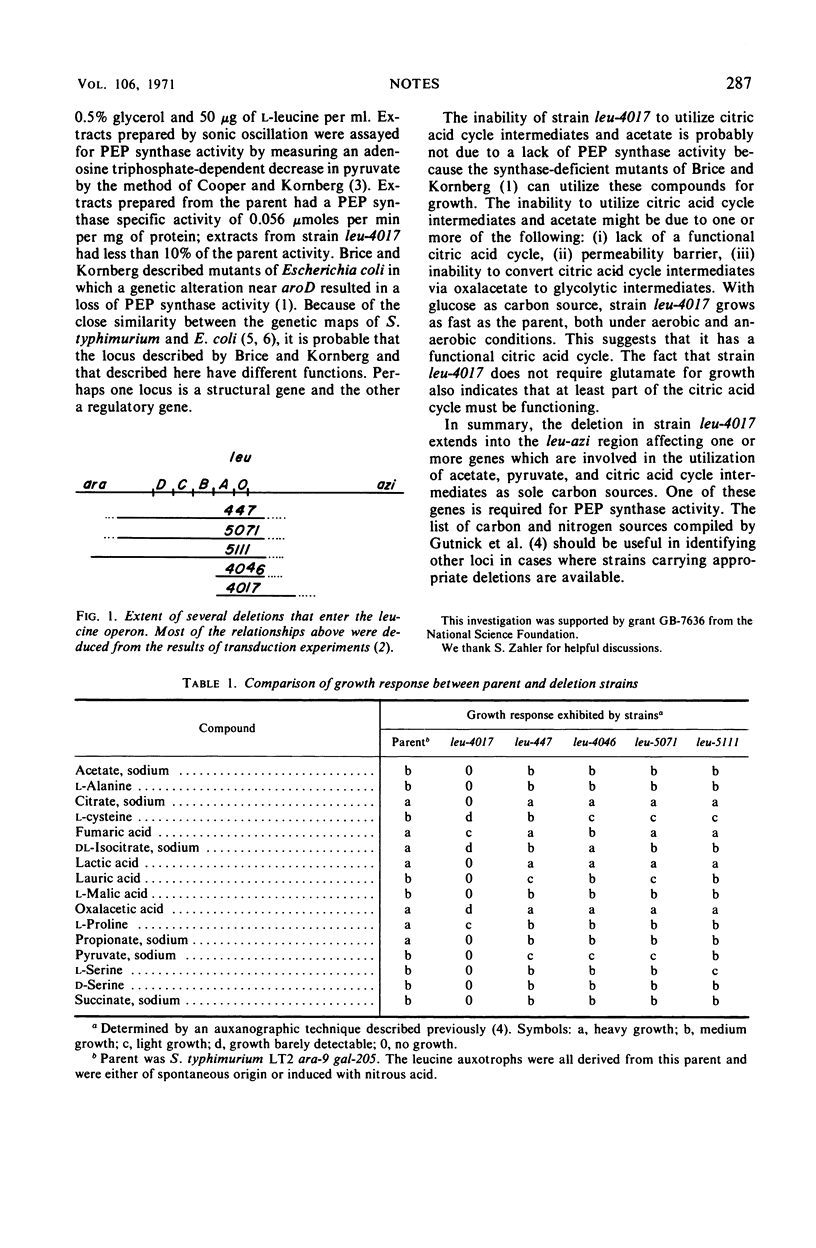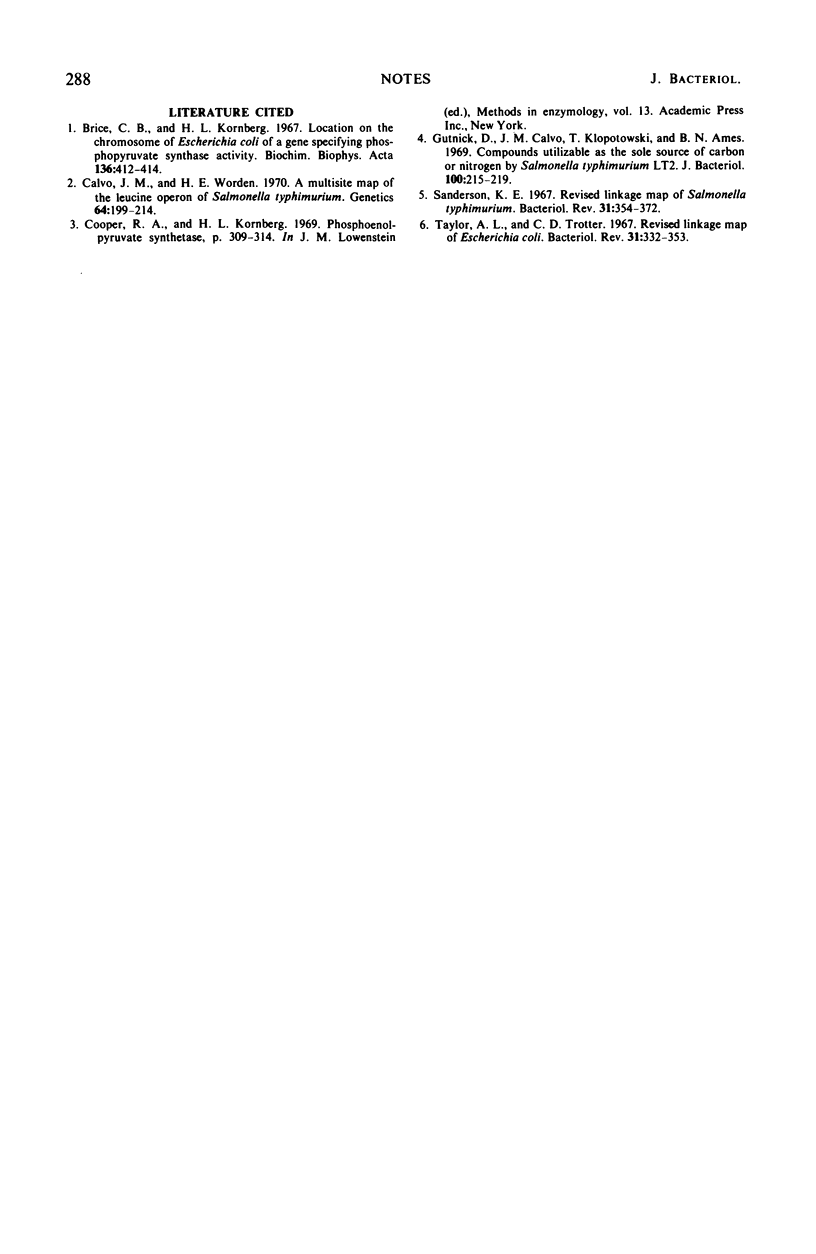Abstract
Strain leu-4017, derived from Salmonella typhimurium LT2, cannot utilize acetate, pyruvate, or citric acid cycle intermediates as sole sources of carbon. The mutation in this strain extends from the A cistron of the leucine operon to some point between leu and azi, presumably deleting one or more loci involved in the utilization of these compounds. One of these loci is required for phosphoenolpyruvate synthase activity.
Full text
PDF


Selected References
These references are in PubMed. This may not be the complete list of references from this article.
- Brice C. B., Kornberg H. L. Location on the chromosome of Escherichia coli of a gene specifying phosphopyruvate synthase activity. Biochim Biophys Acta. 1967 Mar 22;136(2):412–414. doi: 10.1016/0304-4165(67)90094-3. [DOI] [PubMed] [Google Scholar]
- Calvo J. M., Worden H. E. A multisite-mutation map of the leucine operon of Salmonella typhimurium. Genetics. 1970 Feb;64(2):199–214. doi: 10.1093/genetics/64.2.199. [DOI] [PMC free article] [PubMed] [Google Scholar]
- Gutnick D., Calvo J. M., Klopotowski T., Ames B. N. Compounds which serve as the sole source of carbon or nitrogen for Salmonella typhimurium LT-2. J Bacteriol. 1969 Oct;100(1):215–219. doi: 10.1128/jb.100.1.215-219.1969. [DOI] [PMC free article] [PubMed] [Google Scholar]
- Sanderson K. E. Revised linkage map of Salmonella typhimurium. Bacteriol Rev. 1967 Dec;31(4):354–372. doi: 10.1128/br.31.4.354-372.1967. [DOI] [PMC free article] [PubMed] [Google Scholar]
- Taylor A. L., Trotter C. D. Revised linkage map of Escherichia coli. Bacteriol Rev. 1967 Dec;31(4):332–353. doi: 10.1128/br.31.4.332-353.1967. [DOI] [PMC free article] [PubMed] [Google Scholar]


